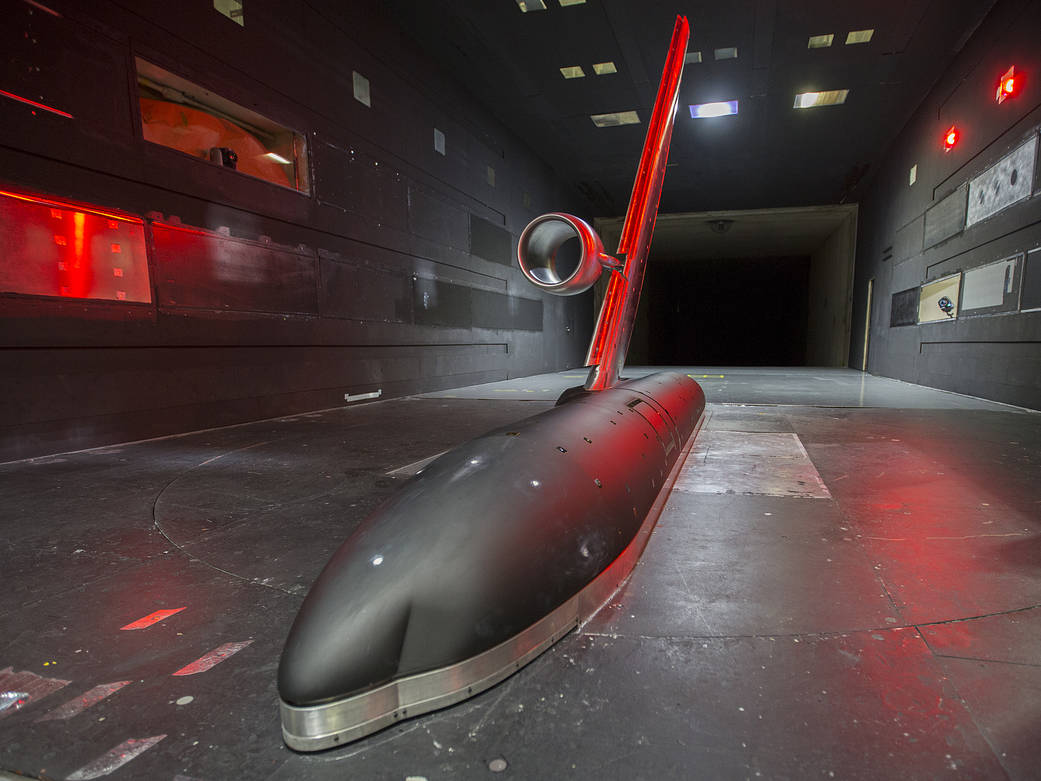New ways to fly aircraft more efficiently and safely are always being put through their paces at the facilities of NASA’s Langley Research Center in Hampton, Virginia. For example, one model is being tested to assess the feasibility of practical high-lift aerodynamic design and optimization.
In order for a modern transport aircraft to safely operate at slow speeds for landing and takeoff operations, a high-lift system consisting of slotted flaps on the trailing edge of the wing is used to achieve the required lift performance. However, the slotted flaps and the associated subsystems are complex and protrude under the wing such that they increase air resistance, and consequently fuel burn, during cruise.
A 10-percent-scale High-Lift version of the NASA Common Research Model (CRM-HL), shown in the photo, is currently being tested in Langley’s 14-by-22-Foot Subsonic Tunnel.
The CRM-HL geometry is a generic representation of a modern transport aircraft’s high-lift system and is available to aerospace industry and academia for research and development purposes.
The NASA Advanced Air Transport Technology (AATT) Project is sponsoring the current research effort aimed at reducing the fuel burn of modern transport aircraft by replacing a conventional slotted flap with a simple-hinged flap featuring an integrated active flow control (AFC) system. The current AFC devices consist of two rows of pneumatic-based actuators embedded on the shoulder region of the simple-hinged flap. These actuators provide various combinations of steady and/or unsteady blowing using arrays of miniature jets that keep the airflow attached over a highly deflected flap, resulting in lift enhancement.
The goal of the AFC-equipped simple-hinged flap system is to achieve a level of lift equal to or better than that of a conventional slotted flap system while using as little pneumatic power as possible.































